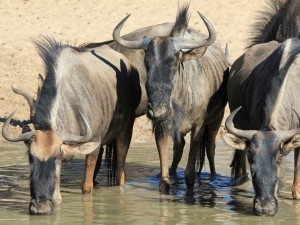
Satellite technology is boosting SA's virtual tourism industry.
This is due to its ability to reach remote areas, which lack access to reliable ADSL connectivity, says Graham Wallington, co-founder and CEO of WildEarth.tv.
In January this year, 600 000 viewers across the world tuned in to watch Nina the chimp give birth live on camera, via Vox Telecom's YahClick satellite connection at the Jane Goodall Chimp Eden Institute, in Mpumalanga.
Wallington believes this is just the tip of the iceberg for live wildlife streaming in SA. "WildEarth.tv has cameras stationed across the globe, streaming live from locations including black bear dens in the United States and storks' nests in Romania," he says.
"However, Africa has some of the most fascinating and diverse wildlife viewing opportunities in the world. People would love to watch wildebeest migrating or to peek inside wild dog dens. That's never been practical until now."
The problem, says Wallington, lies with the high cost of bandwidth and the lack of connectivity in rural locations. "Even if you could obtain a satellite link, VSAT technology was just completely unaffordable for us," he says. "Fortunately, with the arrival of services like the YahClick Service from Vox Telecom, we're able to broadcast from any remote location in South Africa, at a low cost."
WildEarth.tv now streams footage live from several locations across the country, including Thornybush Private Game Reserve, the Madikwe Nature Reserve, Pete's Pond, and Djuma.
"We are also using a connection to shoot a 3D documentary about baboons in the Soutpansberg. The crew is sending us daily footage and communicating so that we can stay up to date with what's going on in the field and offer advice and instructions."
Wallington points out that, although some might question whether "Web cam" tourism can compare to the real thing, fans would disagree. "We have viewers in the States who purposefully go to bed in the early evening just so that they can wake up at 3am to watch the game drives live in South Africa. People are drawn to the unpredictability of it. Just like a real game drive, you have no idea what you will see or experience next."
He also believes that virtual tourism has had a positive impact on both eco-tourism and conservation. "The benefit is that viewers see nature as it really is, and not in a condensed format, such as a wildlife documentary," he explains.
"Documentaries are shot over a year and then edited into an hour's worth of footage, often which has created poor perceptions of creatures such as sharks, which are portrayed as very active and vicious hunters. Live streaming leaves the interpretation largely up to the viewer. They feel more connected and gain a better understanding of what these animals are really like, day to day."
The increased awareness also assists conservationists with fundraising. "When we broadcast Lily the black bear giving birth in the wild for the North American Bear Centre, we created a Facebook page for her. On the back of the awareness created through the Web cam, over $1 million in donations has been raised for the project, which was among others put towards building a new educational centre," Wallington says.
"Pete's Pond also saw an influx of tourists - who call themselves "Pondies" - who have bonded over the video feed and pooled funds to travel to Africa to see the sights in person. More people are "visiting" South Africa through the various cams in a day than actual tourists do in six months, generating online ad revenues and awareness," he says.
"Our game drives from Thornybush generated over half-a-million views over the last three months. There is no way to accommodate that many visits to the reserve in real life without destroying the plant and animal life that we're trying to protect. We can share the bush experience in a non-invasive way."
Share